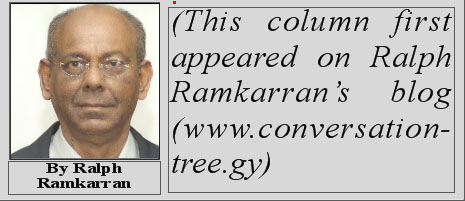
Defying the Republican Party’s decision in 2012 that it must court the Hispanic vote after Mitt Romney’s reduced support in 2004 on account of Republican hostility to immigration reform, Trump accused Mexico of sending its “rapists” and “criminals,” threatened to build a wall on the southern border with Mexico to stop illegal immigration and to expel the eleven million undocumented immigrants, mostly Hispanic. He also promoted Islamophobia and promised to ban Muslims from entering the US.
Despite this posture, Trump won at 29 per cent of the Hispanic vote, 8 per cent more than Romney did in 2012 (NY Times exit polls Nov 11). And notwithstanding the better organized and more lavishly financed campaign of Hillary Clinton and President Obama’s 53 per cent popularity, Trump won several hitherto Democratic states, suggesting that many supporters of the Democratic Party who had voted for President Obama, abstained or voted for President-elect Trump.
Many were of the view that only blue collar, white voters supported Trump. These were certainly his core supporters. But exit polls showed 50, or close to 50, per cent of persons earning over US$50,000 voted for Trump while just below 50 per cent voted for Clinton. 49 per cent of white college educated graduates and 69 per cent of whites without a college degree voted for Trump. 10 per cent of liberals also supported him. (Taken from exit polls NY Times Nov 11).
These figures show that a large number of Americans, such as higher earners and college graduates who would normally embrace the more moderate message of the Democratic Party and Hillary Clinton, were swayed by Donald Trump’s anti-establishment posture or uninspired by Hillary Clinton, her email travails and past association with the moneyed class. Many abstained. Bernie Sanders’ inspired campaign for more progressive policies showed early that great resentment existed against the establishment. While Clinton merely nodded at it, Trump embraced and exploited it with hateful rhetoric and racist policies.
Many affected by the growing economic disparities and demographic changes, which have reduced white Christians to a minority, were no doubt influenced by his messages of ethnic, religious and gender hostility. Trump’s campaign cleverly exploited these insecurities and channelled them into ethnic and religious resentments, with the result that many Americans, including Hispanics and Muslims are now deeply traumatized by and fearful over Trump’s victory.
Identity politics, not Republican ideology or Trump’s eclectic hodgepodge, prevailed. Zelda Blay, writing in the Huffington Post (November 9) said: “The election of Donald Trump is painfully consistent with how America has historically reacted to the racial tide turning in the past. From the 13th amendment, (the abolition of slavery) the seeds of mass incarceration were sown. The hope of reconstruction gave way to Jim Crow. The first black president gave way to Donald Trump…a man who has been enthusiastically endorsed by self-professed white supremacists.” Ms Blay omitted that the Civil Rights Movement gave rise to Nixon’s racist Southern Strategy of the 1960s, relied on by the Republican Party since then and by Trump, of reliance on white racism as its foundation political strategy.
Respected analysts have supported the conclusion that Trump’s support is a product of racism including Paul Krugman, a columnist for the New York Times and Nobel Prize winning economist. Polly Toynbee, writing in the Guardian, said that “Brexit and Trump mark a whitelash.” Professor Jeffrey Winters of Northwestern University in ‘Minority White’ (November 10), concluded that “the 2016 election will go down in history as a white backlash in America.”
Many progressive commentators also blamed the embrace by the liberal elite of neoliberalism and its emphasis on free markets and not job creation. Naomi Klein, the writer and commentator, said: “it was the Democrats’ embrace of neoliberalism that won it for Trump.” This was supported by Robert Reich, former Labour Secretary in the Clinton administration, who said: “Democrats once represented the working class. Not anymore.” Both Bernie Sanders and Jeremy Corbyn, the British opposition leader, characterized Trump’s win as, respectively, “the expression of anti-establishment anger” and an “unmistakable rejection of the establishment” by people who have been left behind by economic policies designed to help the elite.
A sharp analysis came from Harbir Singh, a blogger on the Times of India. He said “Watching Donald Trump has been a horror show for liberals the world over; he seems to personify intolerance, bigotry, misogyny, and greed…But the ugly reality is this: The party that was supposed to represent the interests of the working class against the clout of the elite has passed into the hands of a globalized, financially secure, highbrow elite…The post WWII liberal order is collapsing [in] hubris and corruption.”
The “horror show,” explosively generated by Brexit and Trump, has been gathering steam in Europe for several years. It is poised for further growth unless liberalism extricates itself from the grip of the elite, eliminates its privileges, and advances serious and genuine policies for the working and middle classes.




